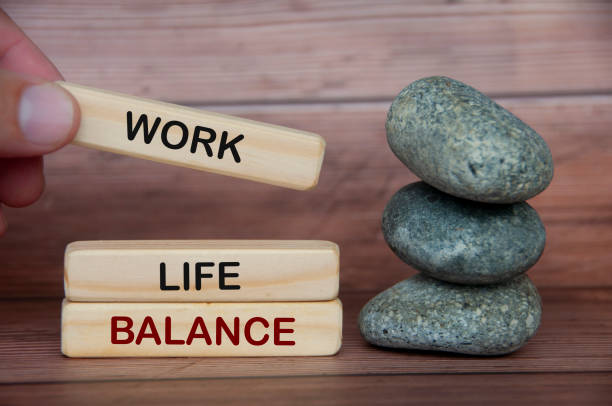Introduction
Achieving work-life balance is essential for leading a fulfilling and healthy life. Balancing professional responsibilities with personal time can enhance well-being, reduce stress, and increase overall satisfaction. This article explores the importance of work-life balance, provides actionable strategies to achieve it, and discusses how maintaining this balance can positively impact various aspects of your life.
The Importance of Work-Life Balance
Enhancing Well-Being
Work-life balance is crucial for maintaining both physical and mental health. When you effectively manage your work and personal life, you are less likely to experience burnout, anxiety, or chronic stress. A balanced approach allows you to allocate time for relaxation, hobbies, and family, which can improve your overall quality of life.
Boosting Productivity
Maintaining a good work-life balance can also boost productivity at work. When you are well-rested and have time for personal interests, you are more focused and efficient during work hours. This balance helps you avoid overworking and ensures that you can perform your job to the best of your ability.
Strategies for Achieving Work-Life Balance
Setting Clear Boundaries
Establishing clear boundaries between work and personal life is a fundamental step in achieving work-life balance. Define specific work hours and stick to them as closely as possible. Avoid checking work emails or taking work calls during personal time to ensure you have uninterrupted time to relax and recharge.
Prioritizing Tasks
Effective time management is crucial for maintaining work-life balance. Prioritize tasks based on urgency and importance. Use tools like to-do lists or digital planners to stay organized and focused. By managing your workload efficiently, you can prevent tasks from piling up and reduce the risk of work-related stress.
Practicing Self-Care
Self-care is essential for maintaining a healthy work-life balance. Allocate time for activities that promote relaxation and well-being, such as exercise, meditation, or hobbies. Taking care of your physical and mental health helps you manage stress and stay energized, making it easier to balance your professional and personal life.
Leveraging Technology
Technology can be both a help and a hindrance in achieving work-life balance. Use productivity tools and apps to manage your tasks and schedule efficiently. However, be mindful of technology’s potential to blur the lines between work and personal life. Set boundaries for when and how you use technology to avoid overextending yourself.
Building a Support System
Having a strong support system is vital for achieving WLB. Surround yourself with supportive friends, family, and colleagues who understand and respect your need for personal time. Communicate openly about your WLB goals and seek advice or support when needed.
Impact of Work-Life Balance on Different Areas of Life
Family Life
Maintaining a good WLB can significantly enhance family relationships. By setting aside dedicated time for family activities and being present during important moments, you strengthen your connections with loved ones. This balance also helps in reducing family stress and improving overall family satisfaction.
Career Growth
Achieving WLB does not mean compromising on career growth. On the contrary, a well-balanced life can lead to better performance at work, which can result in career advancement. Prioritizing tasks and managing time effectively ensures that you meet work goals while maintaining personal well-being.
Personal Development
WLB allows time for personal development and self-improvement. Whether it’s pursuing a new hobby, furthering your education, or simply spending time on activities you enjoy, having a balanced life supports your growth and satisfaction outside of work.
Tips for Maintaining Work-Life Balance
Create a Routine
Establishing a daily routine helps you manage your time effectively and maintain a consistent balance between work and personal activities. Stick to a schedule that includes work hours, personal time, and relaxation to ensure you are addressing all aspects of your life.
Learn to Say No
It’s important to recognize your limits and learn to say no when necessary. Overcommitting to work or social obligations can lead to stress and imbalance. Prioritize your well-being by declining additional responsibilities that may disrupt your WLB.
Take Regular Breaks
Incorporate regular breaks into your workday to rest and recharge. Short breaks can improve focus and productivity, preventing burnout and ensuring you return to tasks with renewed energy. Similarly, take vacations or extended time off to fully disconnect from work and enjoy personal time.
Evaluate and Adjust
Regularly evaluate your WLB and make adjustments as needed. L circumstances and W demands can change, so it’s important to reassess your B periodically. Be flexible and willing to adjust your routines and boundaries to maintain a healthy balance.
Conclusion
Mastering WLB is crucial for a fulfilling and healthy life. By setting clear boundaries, prioritizing tasks, practicing self-care, leveraging technology wisely, and building a support system, you can achieve a balanced approach to work and personal life. Embrace these strategies to enhance your well-being, boost productivity, and enjoy a more satisfying life overall.
FAQs
What are some effective strategies for achieving work-life balance?
Effective strategies include setting clear boundaries between work and personal life, prioritizing tasks, practicing self-care, leveraging technology wisely, and building a supportive network.
How can I manage my workload to avoid work-life imbalance?
Prioritize tasks based on urgency and importance, use productivity tools to stay organized, and delegate tasks when possible to manage your workload efficiently.
How does work-life balance impact my mental health?
Maintaining WLB helps reduce stress and prevents burnout, which can improve mental health and overall well-being.
What role does self-care play in work-life balance?
Self-care is essential for managing stress and maintaining energy levels. Allocating time for activities that promote relaxation and well-being supports a healthy B between W and personal L.
How can I involve my family in achieving work-life balance?
Communicate openly about your WLB goals, schedule family activities, and ensure you are present during important moments to strengthen family relationships and support your B.

